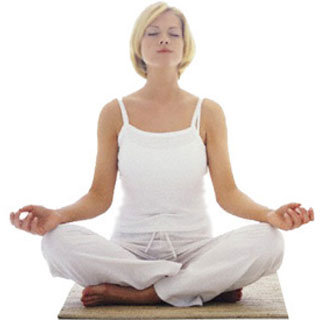Meditate
Stress is emotional and physical strain in response to pressure from the outside world. Any negative situation that causes you to make a rapid adjustment, such as arguing with your partner, your child or a friend, will cause stress, as will positive events, such as moving to a new house, changing jobs or getting married.
When you are under stress, your body reacts with the fight-or-flight response – your heart rate increases, your blood pressure rises and your breathing can become shallow and rapid. Your muscles and jaw tighten, you might sweat and your immune system becomes weaker as your physical and emotional tension soars. Stress can make you eat and drink too much, and can cause anxiety, depression, insomnia, muscle pain and skin rashes. The list of ailments triggered by stress is endless.

The way to healthily bring down your stress levels is to learn to relax and an easy way to do that is to take fifteen to twenty minutes out of your day to decompress: to control your breathing, relax your muscles and focus your mind. In other words, to meditate.
So many studies have shown the benefits of meditation. Among many things it can lower your blood pressure, improve your sleep, reduce chronic pain, calm your mind and leave you mentally alert, with increased energy.
There are many different meditation techniques and it is a matter of finding one that is good for you. Here is an exercise to get you started:
1. Find a quiet, comfortable palace to sit, where you won’t be interrupted for twenty minutes.
2. Pick a work with one or two syllables that helps you relax. Select free, peace, quiet, love or any other word that inspires you to let go.
3. Rest your hands on your lap, close your eyes and consciously relax your jaw and any other muscles that you notice are tight.
4. Silently repeat your word and keep repeating it. You may notice that your mind drifts off to events, work, family, people and other parts of your life. When you notice those thoughts, just acknowledge them, gently let them go and softly return to your word again. It doesn’t matter if you have many thoughts and send little time on your word. Just keep bringing yourself back to your word when you notice that your thoughts are drifting.
5. After twenty minutes, open your eyes. (You can check the time during the meditation by glancing at your watch while staying in your meditative state, or use a timer with a gentle ring to let you know that time is up). When you have finished, take a few extra minutes to gently bring yourself back into the present moment by becoming aware of your body and how it feels and the sounds around you. When you are ready, continue with your day, refreshed, revitalized and full of life!
The ideal is to meditate twice a day, but eve once a day is good for you. If you start practicing regularly, within a week or two you will see the benefits. In addition to dealing more easily with everyday obstacles and stresses, you’ll probably find that you are calmer and more positive, that you sleep easier and that you have lower blood pressure!

